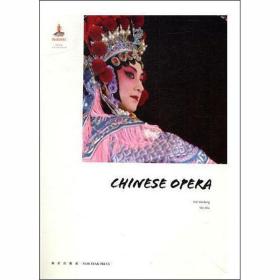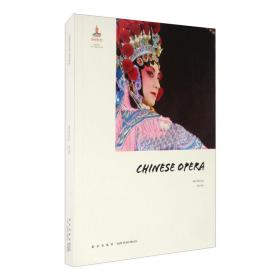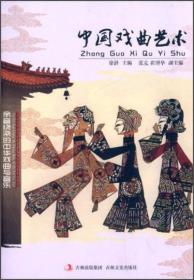
中国戏曲艺术
戏剧、舞蹈 新华书店全新正版书籍
¥ 51 5.2折 ¥ 98 全新
库存4件
江苏无锡
认证卖家担保交易快速发货售后保障
作者梅卫东(Mei Weidong) 著
出版社新星出版社
出版时间2017-04
版次1
装帧平装
货号1201695581
上书时间2023-02-10
- 在售商品 暂无
- 平均发货时间 7小时
- 好评率 暂无
- 最新上架
商品详情
- 品相描述:全新
- 新华文轩网络书店 全新正版书籍
- 商品描述
- 《 中国戏曲艺术:英文 》由梅卫东,梅玮主编
图书标准信息
- 作者 梅卫东(Mei Weidong) 著
- 出版社 新星出版社
- 出版时间 2017-04
- 版次 1
- ISBN 9787513325196
- 定价 98.00元
- 装帧 平装
- 开本 16开
- 纸张 胶版纸
- 页数 285页
- 【内容简介】
- ¡¡¡¡Chinese opera mainly incorporates three different forms of art£¬ namely£¬ folk singing and dancing£¬ talking and singing£¬ and farce. Deriving from primitive singing and dancing£¬ it integrates diverse stage arts and boasts a time-honored history. Starting from the Han Dynasty and through to the Tang£¬ Song and Jin periods£¬ it finally blossomed into an integral art form. Absorbing the merits of literature£¬ music£¬ dance£¬ fine arts£¬ martial arts£¬ acrobatics and performing art£¬ it encompasses more than 360 forms£¬ and is characterized by mixing multiple forms of art according to a certain standard and presenting unique individuality among the common attributes. As one of the world\'s three major ancient opera cultures£¬ the other two being Greek tragedy and comedy and Indian Sanskrit drama£¬ Chinese opera falls into a wealth of categories. Incomplete statistics show that there are about 360 forms of opera in different regions of Cluna£¬ with thousands of traditional repertoires.
- 【作者简介】
-
¡¡¡¡Mei Weidong£¬Mr. Mei Weidong, grandson of world-famous Peking Opera master Mei Lanfang, graduated from the Directing Department of Tokyo Visual Arts College, and was later awarded a Master\'s Degree in Economics by the University of Tokyo.
¡¡¡¡Mr. Mei Weidong had worked as a Senior Manager, Assistant General Manager, and Executive Vice-President at the Sumitomo Mitsui Banking Corporation, Tokyo, at the same time serving as Chief Researcher at the Japan Research Institute Limited. Mr. Mei Weidong retired from those positions and returned to China in 2012. He is now Vice-President of the Mei Lanfang Culture-Art Seminar, and Honorary Curator of the Mei Lanfang Memorial Hall in Taizhou, Jiangsu Province.
¡¡¡¡Influenced by his father Mei Shaowu and his uncle Mei Baojiu, Mr. Mei Weidong has shown great interest in traditional Chinese opera £¨xiqu£© and Western music from his childhood, and he takes as his solemn responsibility to carry forward and pass along the artistic traditions of the Mei School and of Peking Opera in general. Mr. Mei Weidong has assisted his father Mei Shaowu in the publication Of My Father Mei Lanfang £¨¡¶Îҵĸ¸Ç×÷À¼·¼¡·£©. During the time he worked and lived in Japan, he served as the coordinator of a number of performances of the visiting Mei Lanfang Peking Opera Troupe led by Mei Baojiu in Japan, and facilitated cultural exchanges between Beijing\'s Peking Opera artists and Japan\'s operatic artists. Besides, Mr. Mei Weidong has participated in part of the production of the hour-long documentary Mei Lanfang, and cooperated with Mr. Mei Shaowu in the compilation and publication of the Biography of Mei Lanfang £¨¡¶Ã·À¼·¼×ÔÊö¡·£©.
¡¡¡¡
¡¡¡¡Mei Wei£¬A great-grandson of Mei Lanfang\'s, Mr. Mei Wei graduated fromthe Department of Chinese Language and Literature of PekingUniversity, and was later awarded the degree of M.A., majoring inXiqu Performing Art Theory, by the National Academy of ChineseTheater Arts. Mr. Mei Wei now works at the Mei Lanfang MemorialHouse in Beijing, and is the deputy director of the Mei Lanfang ArtResearch Center. Since 2008, Mr. Mei Wei has devoted most of histime and energy to the research of Mei Lanfang\'s operatic art, andthe collection of related materials on traditional Chinese opera. Hisachievements in this field include the book Collection of OperaticTunes and Musical Scores of Mei Lanfang £¨¡¶Ã·À¼·¼³ªÇ»ÇúÆ×¼¯¡·£©and the full-length TV documentary Peking Opera£º the Quintessenceof Chinese Culture£¨¡¶¹ú´â¾©¾ç¡·£©. - 【目录】
-
Preface
Prelude A Splendid Legacy of Xiqu£¬ or Traditional Chinese Opera
Chapter 1 Elegant Kunqu£º Ancestor of All Chinese Operas
Chapter 2 Outstanding Peking Opera£º Representative of Chinese Opera
Chapter 3 Graceful Yueju£º Second Major Opera in China
Chapter 4 Simple Henan Opera£º Greatest Local Opera in China
Chapter 5 Vehement Qinqiang£º The Local Opera with the Longest History in China
Chapter 6 Consummate Sichuan Opera£º Unparalleled in China
Chapter 7 Flourishing Cantonese Opera£º Opera in the South in Cantonese
点击展开
点击收起
相关推荐
— 没有更多了 —





















以下为对购买帮助不大的评价